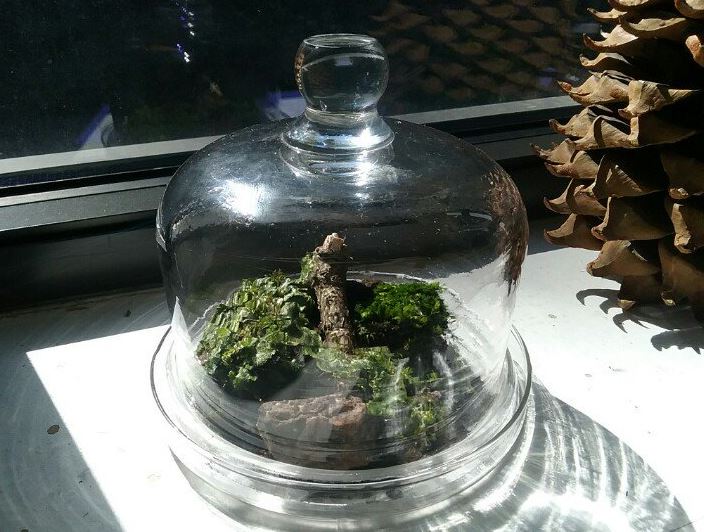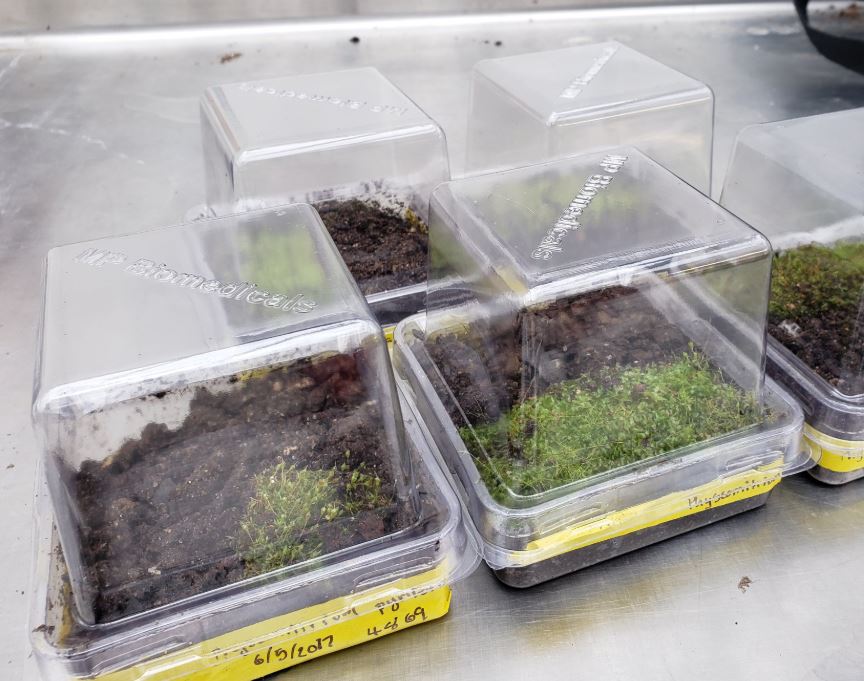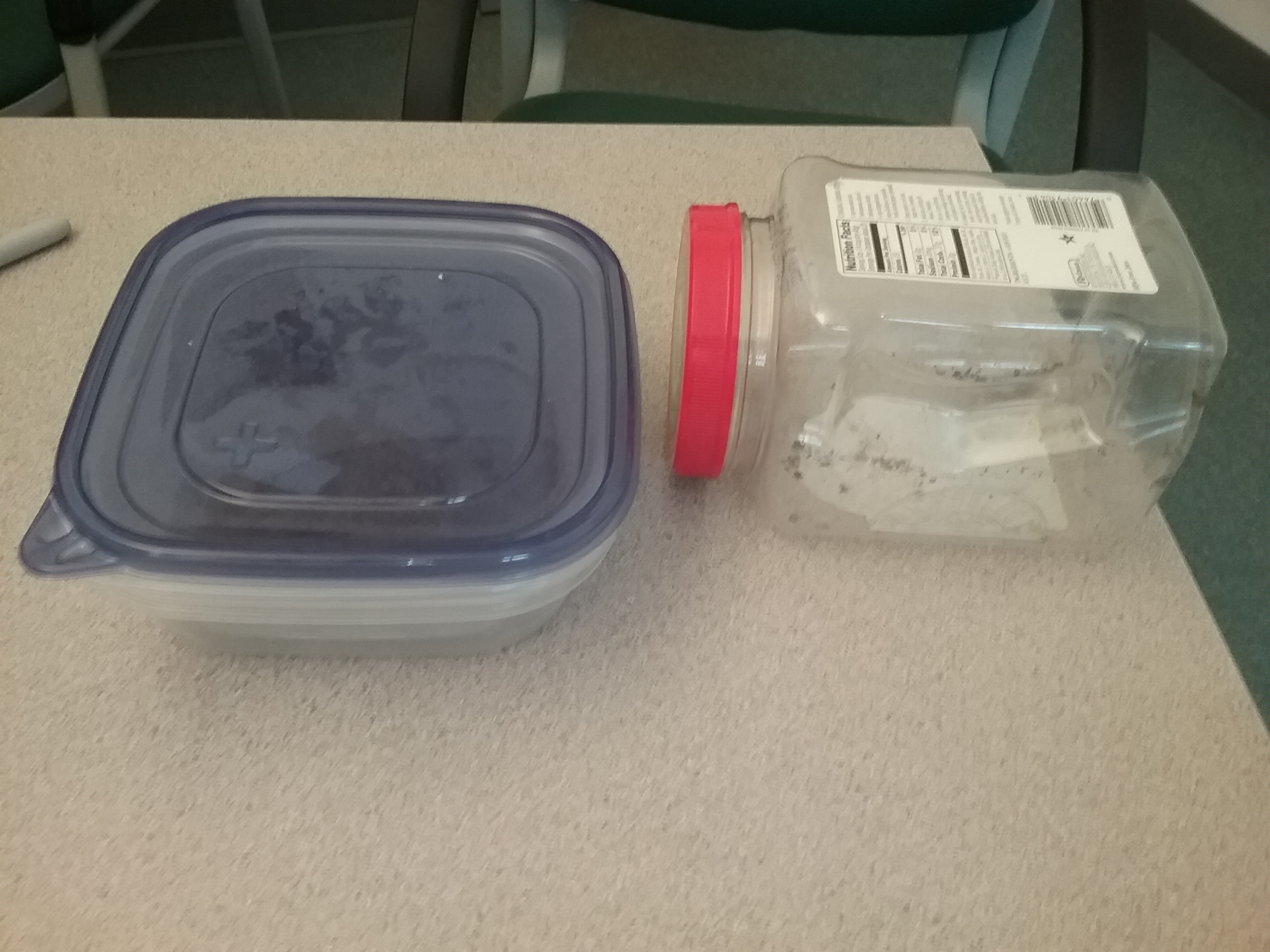Tips on identifying and collecting goblet moss
Hello everybody!
The past weeks have brought a significant activity in the project. We have a lot of Physcomitrium popping in many states of the Southern US, from Texas to the Carolinas, and we have reached the amazing number of 37 project members, thank you for your support!
With this first "blooms" of goblet moss we are also finding the first challenges on how to identify them in the field, when to collect them, etc. Today I will try to help a little with this, please, feel free to comment or email me any questions.
Many of the recent observations on iNat show very nice colonies of Physcomitrium in their early stages, with the capsules expanding, like the image in the banner of the group:
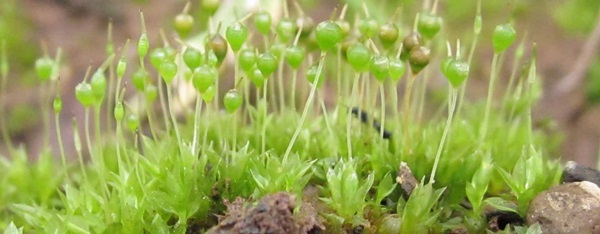
Young Physcomitrium colony
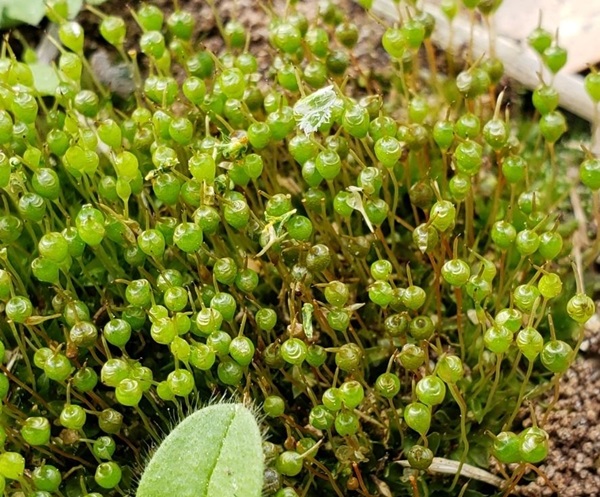
Another young Physcomitrium colony
Note the upright stalks and the pear-shaped capsules with their calyptras. Spore production (due to the biological process of meiosis) is on fire at this stage, but the young spores still need to mature and to be covered with sporopollenin, the substance that will make them extremely resistant out there.
At this stage it is very easy to misidentify young Funaria colonies, the bonfire moss, and take them for goblet moss (Physcomitrium). I have already seen a few of these, and the automatic ID app of iNaturalist also has some problems identifying them correctly. Take, for example, this picture submitted by Helen Hamilton via email.
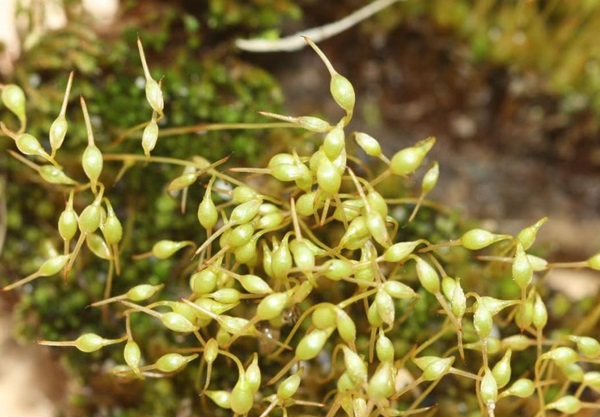
A young colony of Funaria
The calyptra covering the capsule is very similar, and at first the stalks are short, so it is virtually impossible to tell them apart from goblet moss. However, very soon the Funaria stalks grow tall and the capsule seems almost hanging. The "beak" (rostrum) of the calyptra is also relatively longer. These images remind me of swans, with a long neck and the beaked head almost looking downwards.
I hope this helps a little identifying the goblet moss. Now, another important issue is WHEN to collect them. Remember that we will be extremely thankful if you want to take your participation one step further and send us actual specimens. However, the samples from the previous images are not ready to be collected, the spores are too young. A colony ready to be sampled and dried out will look more like those of these observations by kdwhitbey and johnjschenk
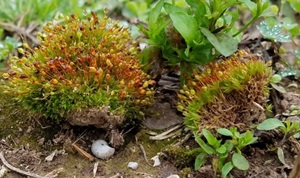

Mature Physcomitrium colonies
A closer look to these samples may reveal a situation like this one, a zoomed in capture of the observation from ash2016.
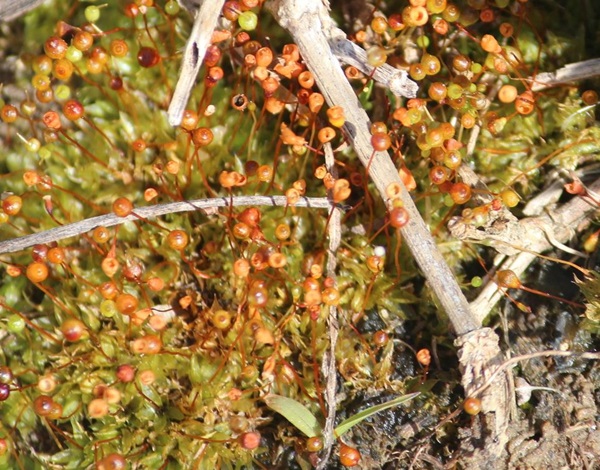
There are capsules in several stages of development here, some of them even completely open, but a majority show a healthy toasted color and the lid still in place. This is exactly the right moment to collect them. as explained in the training guidelines.
As usual, we are happy to help you with your questions.
In a future post I will share some ideas to allow the samples mature indoors if you can't return later to a location where they are green at the moment.
Happy PhyscoHunt!
Rafa


